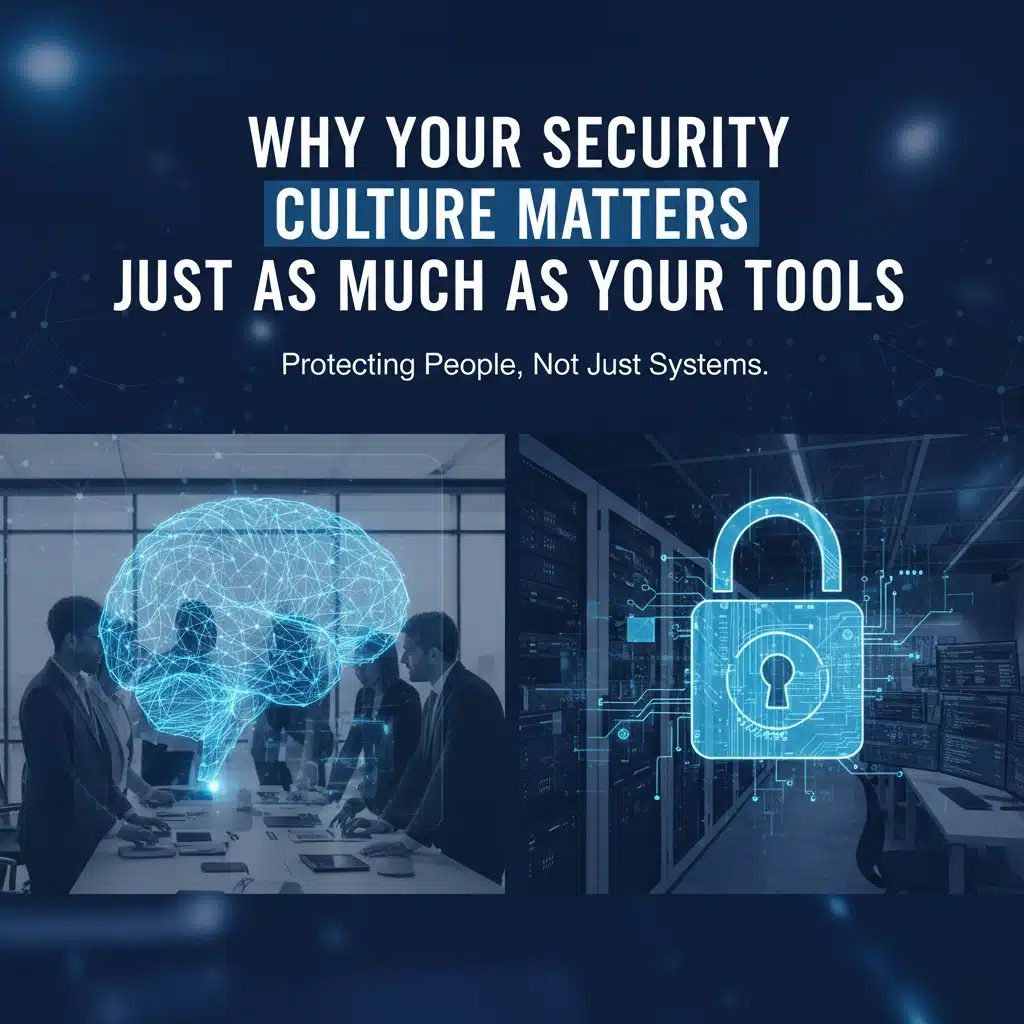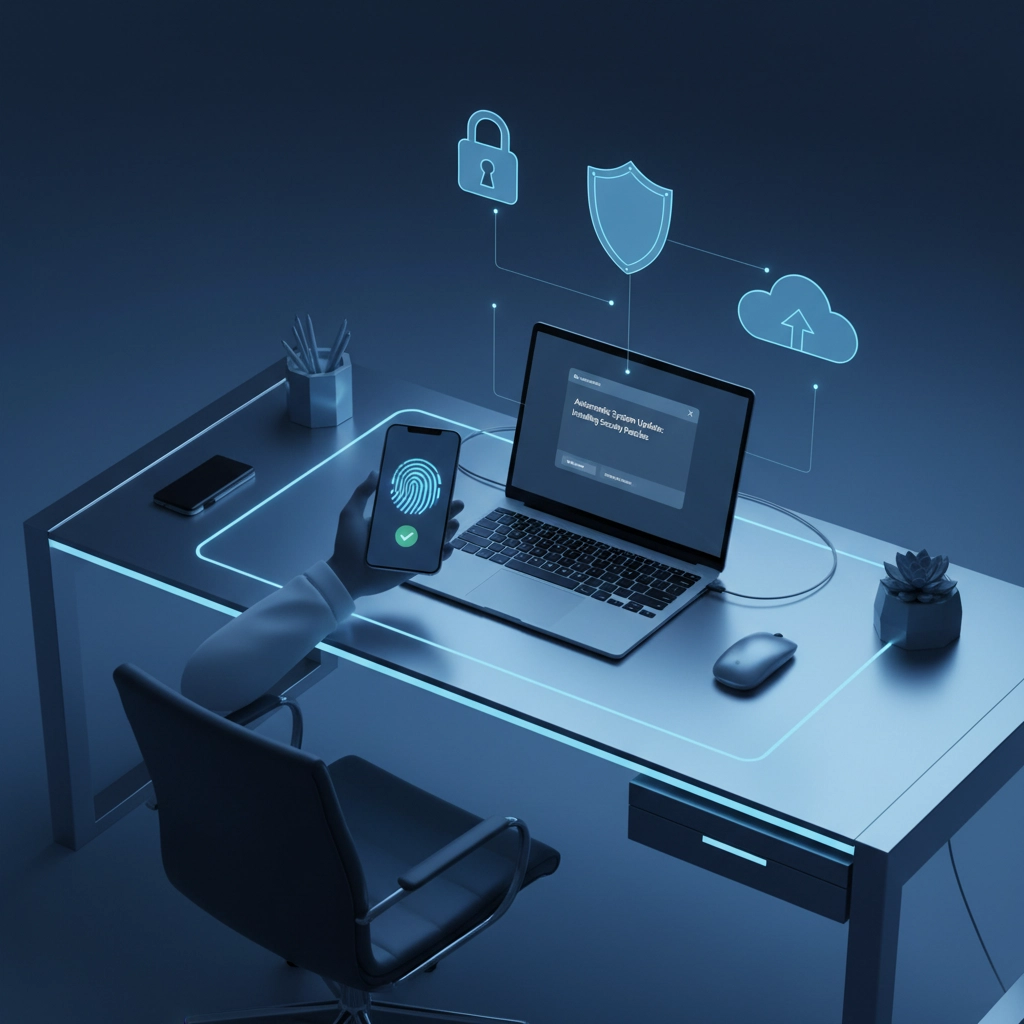Your Fancy Security Tools Have a People Problem
Here’s a reality check: you could have the most expensive firewall money can buy, but if Dave from accounts clicks on that dodgy email attachment, you’re still stuffed.
Too many Aussie businesses throw money at shiny security tools thinking they’ve solved their problems. Meanwhile, their biggest vulnerability walks through the door every morning with a coffee and good intentions.
The harsh truth? 95% of data breaches involve human error. That’s not a tech problem, it’s a people problem.
What Security Culture Actually Means
Security culture isn’t just another corporate buzzword. It’s when everyone in your business, from the receptionist to the CEO, naturally thinks about security in everything they do.
Think of it like road safety. You don’t consciously think “I must look both ways before crossing” every single time. You just do it because it’s ingrained in how you move through the world.
That’s what we’re after with security culture.
Why Your Tools Aren’t Enough (Even the Expensive Ones)
Don’t get us wrong, security tools are important. But they’re only as good as the people using them.
Here’s what happens when you rely on tools alone:
- Staff find workarounds that bypass security measures
- Policies get ignored because they’re too complicated
- People don’t report suspicious activity because “that’s IT’s job”
- Your expensive security stack becomes digital shelf-ware
The bottom line: Technology protects systems, but culture protects people. And people are where most breaches actually happen.
REALITY CHECK: Organizations with strong security cultures experience 70% fewer user-related security incidents compared to those relying on training alone.
Building Your Security Culture: The Practical Steps
1. Get Leadership On Board (This Is Non-Negotiable)
Security culture has to start at the top. If your executives treat cybersecurity like someone else’s problem, your staff will too.
What good leadership looks like:
- CEOs who actually follow password policies (yes, even for their personal accounts)
- Managers who celebrate staff for reporting phishing attempts
- Budget allocated for security training, not just security tools
- Security mentioned in team meetings, not just IT meetings
2. Make Security Feel Natural, Not Like Homework
The best security practices are the ones people don’t even notice they’re doing.
Smart ways to embed security:
- Use single sign-on so staff aren’t juggling dozens of passwords
- Set up automatic updates instead of nagging people to install them
- Choose cloud services with built-in security rather than bolt-on solutions
- Create approval workflows that are fast, not frustrating
3. Ditch the Boring Training Sessions
Those monthly “cybersecurity awareness” PowerPoints aren’t working. Nobody remembers what they learned last Tuesday when they’re dealing with a suspicious email on Friday afternoon.
What actually works:
- Quick, bite-sized tips shared in team meetings
- Real examples from your industry (not generic scenarios)
- Simulated phishing tests that teach instead of shame
- Stories about what good security decisions look like in practice
4. Celebrate the Wins (Not Just the Disasters)
Most businesses only talk about security when something goes wrong. That’s like only talking to your kids when they misbehave.
Start celebrating:
- The team member who reported a suspicious email
- Departments that complete security training on time
- Anyone who suggests a security improvement
- Hitting security milestones (like 100 days without a phishing incident)
5. Measure What Matters
You can’t improve what you don’t measure. But forget complicated metrics: focus on the basics.
Track these simple indicators:
- How many staff report suspicious emails (higher is better)
- Phishing simulation results (but use them to improve, not punish)
- Security incident response times
- Staff feedback on security tools and processes
KEY INSIGHT: Knowledge without behaviour change doesn’t prevent breaches. Training alone reduces phishing click rates by only 3%: but culture change creates lasting improvements.
Why Leadership Makes or Breaks Everything
Your security culture will never be stronger than your leadership’s commitment to it. That’s just how organizations work.
Leaders set the tone by:
- Modelling secure behaviour themselves
- Funding cultural initiatives, not just technical ones
- Making security part of regular business conversations
- Backing up policies with actual consequences
The executive team’s job isn’t to become cybersecurity experts: it’s to make security everyone’s priority.
The Cloud Computer Company Difference: People-First IT
At Cloud Computer Company, we’ve seen too many Aussie businesses get burned by the “tools first, people later” approach. That’s why we lead with culture.
Our people-first approach includes:
- Security solutions that actually fit how your team works
- Training that’s relevant to your specific business and industry
- Ongoing support to help embed good habits
- Leadership coaching to drive culture change from the top
We help you build security into your business DNA, not just your server room.
Your Next Steps: From Tools to Culture
Ready to shift from a tools-focused approach to a culture-focused one? Here’s how to start:
- Audit your current culture – What security behaviours do you actually see in your workplace?
- Get leadership aligned – Make sure your exec team understands their role in culture change
- Start small – Pick one security habit to focus on organization-wide
- Make it easy – Choose tools and processes that support good behaviour
- Celebrate progress – Recognize and reward the security wins along the way
Remember: Your security is only as strong as your weakest link. Make sure that link is supported by a culture that’s got their back.
Ready to build a security culture that actually protects your business? Contact Cloud Computer Company today and let’s chat about turning your people into your strongest security asset.



